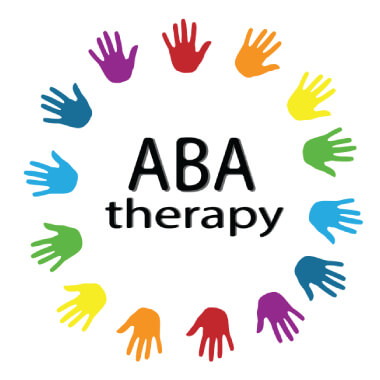Coloring has always been a therapeutic and creative activity loved by people of all ages. With the advent of technology, coloring enthusiasts can now enjoy this calming pastime with friends and family, regardless of geographical barriers. Online platforms that facilitate coloring with friends have gained immense popularity, allowing users to connect, collaborate, and share their artistic creations virtually. In this blog post, we will dive into the world of “Color with Friends Online” and explore the joy of participating in virtual coloring communities that foster creativity, relaxation, and meaningful connections.
I. The Evolution of Coloring
Coloring has transcended its traditional form in coloring books to become an engaging digital activity. The rise of digital devices and interactive platforms has transformed coloring into an accessible and interactive art form.
II. The Appeal of Coloring with Friends Online
Virtual Socialization: Coloring with friends online brings people together virtually, fostering a sense of community and connection, especially in times when physical gatherings may not be feasible.
Creative Expression: Online coloring platforms provide a wide range of digital tools and coloring options, empowering users to express their creativity and produce vibrant, eye-catching artwork.
Stress Relief: Engaging in coloring activities, whether solo or with friends, has been scientifically proven to reduce stress and promote relaxation, making it an ideal escape from daily pressures.
III. Exploring Online Coloring Platforms
Interactive Features: Online coloring platforms often offer interactive elements, such as color palettes, brush styles, and shading options, providing users with a dynamic coloring experience.
Collaborative Coloring: Some platforms allow friends to work together on the same coloring page in real-time, fostering a sense of camaraderie and encouraging artistic collaboration.
Coloring Challenges and Contests: Many online communities host coloring challenges and contests, motivating participants to showcase their talent and creativity, and even win prizes.
IV. Building a Virtual Coloring Community
User-Friendly Interfaces: Successful online coloring platforms boast user-friendly interfaces that cater to users of all ages and skill levels, making the experience enjoyable and accessible.
Engaging Community Features: Implement interactive chat features, user profiles, and private rooms for friends to connect, share ideas, and exchange compliments on each other’s artwork.
Moderation and Safety: Prioritize user safety by implementing robust moderation tools to ensure a positive and respectful environment within the virtual community.
V. Virtual Coloring for All Ages
Coloring for Kids: Online coloring platforms offer kid-friendly designs and intuitive tools, promoting children’s creativity and fine motor skills while providing a safe virtual space for them to interact with friends.
Adult Coloring Communities: Adult coloring enthusiasts can explore intricate and sophisticated designs that cater to their preferences, fostering a sense of mindfulness and artistic expression.
VI. The Joy of Color-Themed Events
Seasonal Celebrations: Online coloring platforms often host color-themed events during holidays and seasons, encouraging participants to embrace the festive spirit through art.
Charity Initiatives: Virtual coloring communities may organize coloring events to support charitable causes, using art as a means to make a positive impact on society.
VII. Inspirational Coloring Challenges
Theme-Based Challenges: Host theme-based coloring challenges that revolve around specific topics, such as nature, fantasy, or cultural diversity, inspiring participants to explore various artistic styles.
Artistic Collaborations: Encourage users to collaborate with friends or strangers on a single coloring page, creating a beautiful mosaic of diverse artistic contributions.
VIII. The Role of Technology in Virtual Coloring
Digital Tools: Online coloring platforms offer a vast array of digital tools, from basic coloring brushes to advanced effects, allowing users to experiment and create unique pieces.
Augmented Reality (AR) Coloring: Some platforms incorporate AR technology, enabling users to see their colored creations come to life in a three-dimensional and interactive manner.
IX. Embracing Inclusivity and Diversity
Multicultural Designs: Inclusivity is key in online coloring communities. Platforms should offer a diverse range of designs that represent various cultures and backgrounds, fostering an inclusive environment.
Accessible Features: Ensure that the platform is accessible to users with different abilities, providing options for users with visual impairments or mobility challenges to engage in virtual coloring.
X. The Future of Coloring with Friends Online
Virtual Reality (VR) Integration: As technology evolves, we can expect VR integration in online coloring platforms, providing an immersive and interactive coloring experience.
AI-Powered Recommendations: AI algorithms may offer personalized coloring recommendations based on users’ preferences and previous artwork, enhancing the overall user experience.
XI. Conclusion
Coloring with friends online is a delightful and enriching experience that transcends boundaries and fosters creative connections. Through interactive platforms, users can explore the vast world of coloring, express their creativity, and bond with friends, all from the comfort of their homes. The integration of technology, socialization, and art has reimagined the classic activity of coloring, opening up endless possibilities for self-expression and collaboration. As online coloring communities continue to grow and evolve, the joy of coloring with friends will only become more accessible and cherished, promoting relaxation, creativity, and unity among individuals worldwide. Whether you are an experienced artist or a budding enthusiast, the world of “Color with Friends Online” awaits, ready to ignite your creativity and enrich your life with vibrant colors and meaningful connections.









